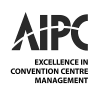REPUBLIC OF THE PHILIPPINES
All content is in the public domain unless otherwise stated.
Bringing a fresh perspective to the helm of the Philippine International Convention Center (PICC), Nicolette Ann Cruz, a lawyer specialising in infrastructure practice, has assumed the role of general manager. Her appointment comes at a pivotal time as the iconic venue gears up for two landmark events in 2026 – its 50th anniversary and the hosting of the ASEAN Summit
Tell us about your stint as a lawyer.
I have been working in infrastructure law for a long time, specifically 15 years in government contracts that cover both infrastructure and non-infrastructure projects; for infrastructure alone, it has been over a decade.
Even back in law school, I knew I wanted a practice with a public service component. So, right from the start, I was involved in infrastructure, at a time when most of my classmates were still doing what you would call conventional legal practice – things like litigation and corporate law. While I did both approaches, in government, I intentionally worked across the judicial, executive, and legislative branches, always focusing on government infrastructure contracts.
It must have been a challenge taking the non-traditional route.
The industry presents unique challenges, largely due to its male-dominated nature. Since I began my practice, I often found myself as the sole woman in nearly all my meetings. Starting my career at a young age also meant I was often younger than my colleagues on projects and tasks, but I’ve always embraced these challenges head-on.
Fortunately, I have not encountered any major negative experiences stemming from this. While there are a few common issues that most women face in any professional setting, they have never been insurmountable for me. These experiences have ultimately strengthened my resolve and refined how I approach my work. However, some aspects of the job still daunt me, especially those outside my direct control.
While I have complete control over my own output – how well I perform and the sincerity of my intentions – the numerous players and stakeholders in infrastructure make it difficult to control every variable. I suppose these external factors are what make the job particularly challenging for me. But then again, what job doesn’t come with its own set of challenges?
You have an enviable track record lawyering for reclamation projects, international airports and seaports, toll roads and bridges, power plants and renewable energy, environmental rehab, and a lot more. How does this background prepare you for leading PICC, the premier MICE venue of the government and a National Cultural Treasure?
Taking on the PICC role as an outsider was my initial concern when tasked with preparing for the 2026 events.
Given my extensive background in infrastructure practice, I have always viewed the PICC, alongside other iconic structures in the Cultural Center of the Philippines (CCP) Complex, as a testament to the Philippines’ “golden age” of infrastructure. These buildings have served us for decades, a true test of time.
What I did not realise was that there were significant, grand plans for the PICC beyond mere expansion or improvement. The fact that such a landmark area would undergo further development made the transition into this role less difficult than anticipated.
Perhaps the most challenging aspect for me now is the laser focus required for a single infrastructure project. As an infrastructure and transactions advisor, I am accustomed to managing several projects concurrently. While this does not compromise the output of individual projects, it does necessitate a different mindset. Here, I am given one singular task and am expected to execute it flawlessly. This intense focus, however, allows me to be meticulously involved in every detail, not to the point of micromanagement, but to deeply familiarise myself with every component of PICC’s plans and projects.
What are the plans for the PICC?
My work at the PICC falls into two main categories. First, there are the general annual projects and programmes that the PICC consistently undertakes, such as business continuity, revenue target maintenance, and the physical upkeep and enhancement of the infrastructure.
The second category involves major renovation and enhancement projects specifically tailored to prepare the facility for its golden anniversary and the ASEAN Summit in 2026. These are landmark events not just for the Philippines, but globally. Beyond ongoing physical works, significant architectural and engineering projects are scheduled to commence in mid-2025 and continue until just before the ASEAN Summit.
Given PICC’s status as a National Cultural Treasure, my immediate concern was how to make it the best it can be without erasing its rich heritage and its significant place in our political, economic, cultural, and social landscape, but rather enhancing it. Since the CCP Complex, including the PICC, was designed by the late national artist Leandro Locsin, we have engaged his son for the architectural and engineering design to ensure the brutalist architecture and its components are not compromised.
The PICC’s role as the Philippine government’s premier MICE venue means both national and local governments have a vested interest in its future. The interplay of involving all stakeholders in the plans for the PICC, not just for next year but for many years to come, is an exciting challenge.
In my initial meetings with PICC departments, officers, and personnel, I emphasised that this is a time when “almost all eyes are on you”. Instead of shying away, I encouraged them to embrace this honour and strive not just to meet, but to surpass expectations, which is entirely possible given their decades of institutional knowledge. It is a truly exciting collaboration and dynamic between government and private sector stakeholders for the PICC.
For me, this goes beyond just tourism, conventions, and MICE. I see it as an integrated effort to provide our countrymen with the quality goods, services, and projects they deserve. This has always been my personal motivation for practicing infrastructure law. When you contribute to making an average Filipino’s life better – through traffic-free roads, efficient airports with on-time flights, or event venues that create lasting positive memories– that is your direct contribution to improving their lives.
Any other plans and targets for PICC?
Beyond the physical infrastructure, my focus also extends to fortifying the PICC as an institution. This involves strengthening its personnel, enhancing their competencies, and reinforcing its relationships with both government entities and other stakeholders. This institutional growth can, and will, be pursued simultaneously with the preparations for the ASEAN Summit.
A key objective is to secure various ISO and green certifications for the PICC, particularly those related to sustainability. Sustainable development is not just a trend in MICE or infrastructure; it is a fundamental requirement for both government and privately-owned facilities.
I have also tasked technical services with developing a conservation protection management plan for the artworks housed within the PICC. These pieces, all owned by the Bangko Sentral ng Pilipinas (Central Bank of the Philippines), are integral to the venue’s charm, history, and intrinsic value, effectively making the PICC a museum.
Therefore, our approach to treating and protecting these artworks must meet museum-level standards.





